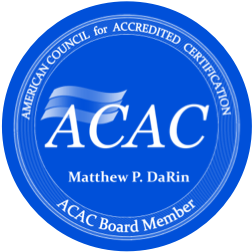Performing High-Level Property Damage Assessments for Water, Mold, Fire and Smoke in Commercial Properties
Commercial properties, such as universities and health care facilities, are complex structures with specialized needs. When damage occurs, whether from water, mold, fire, or smoke, it’s essential to conduct a thorough and accurate assessment to determine the extent of the damage and develop a plan for restoration. Here’s a guide to performing high-level property damage assessments in commercial properties.
- Water Damage – When assessing water damage, it’s crucial to identify the source of the water, determine the extent of the damage, and assess the safety of the building. This includes inspecting electrical systems and checking for potential mold growth. A moisture meter can be used to measure the level of moisture in building materials and identify hidden water damage.
- Mold Damage – Mold can cause serious health problems and can spread quickly, so it’s important to address mold growth as soon as it’s detected. During a mold assessment, it’s essential to identify the type of mold and determine the extent of the growth. A mold professional will also assess the source of the mold and develop a plan for remediation.
- Fire and Smoke Damage – Fire and smoke damage can be extensive and can impact the structure, electrical systems, and HVAC systems. During a fire and smoke damage assessment, it’s crucial to determine the extent of the damage, assess the safety of the building, and develop a plan for restoring the property. This includes cleaning and restoring affected areas and removing any contaminated building materials.
- Documentation – During each of these assessments, it’s crucial to document all findings, including photos, descriptions, and measurements. This documentation will be used to develop a restoration plan and provide evidence of the extent of the damage for insurance purposes.
- Professional Assistance – It’s important to work with experienced professionals when conducting property damage assessments. These professionals have the training and equipment necessary to accurately assess the damage and determine the best course of action for restoration.
In conclusion, when it comes to property damage assessments in commercial properties, accuracy is key. By following these guidelines, you can ensure that the assessment is thorough and that the restoration plan addresses all the necessary components to return the property to its pre-damaged state. Don’t hesitate to seek professional help, as it’s essential to restore the property to a safe and functional state as quickly as possible.
Contact Us for more assistance
Collaborative for High Performance Schools (CHPS) IAQ
The EPA guidance below references the comprehensive work done by CHPS in the Indoor Environmental Quality Specifications doc below:
EPA IAQ For Schools Guidance
The EPA’s IAQ Design Tools for Schools guidance, part of the greater IAQ Schools resources, provide strategies for key school construction and renovation issues.
- Preliminary Design Phases
- Controlling Pollutants and Sources
- Heating, Ventilation and Air-Conditioning (HVAC) Systems
- Moisture Control
- Construction
- Commissioning
- Renovation and Repair of Existing Schools
- Operations and Maintenance
- Portable (Relocatable) Classrooms
OSHA’s IAQ For Schools
OSHA’s Indoor Air Quality for Schools resources
LUNG.ORG Resources
- Access the Lung.org IAQ Guide



















